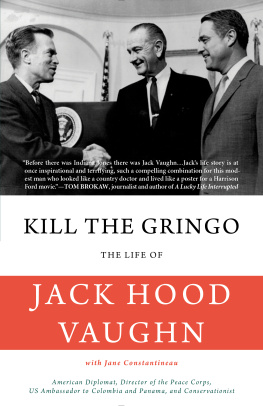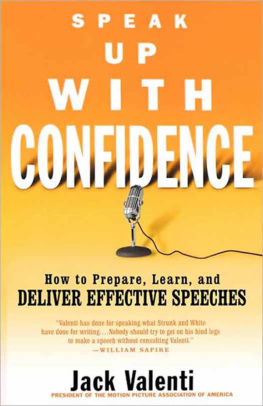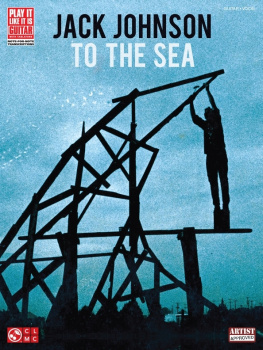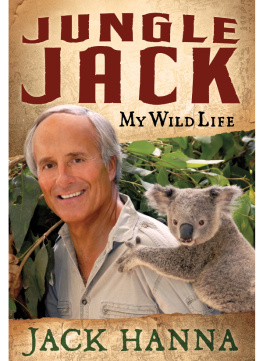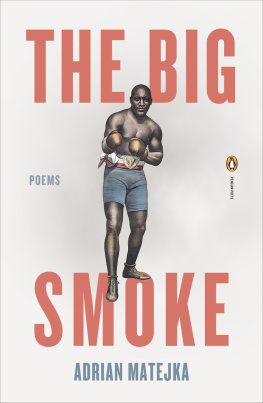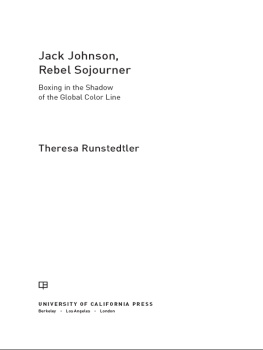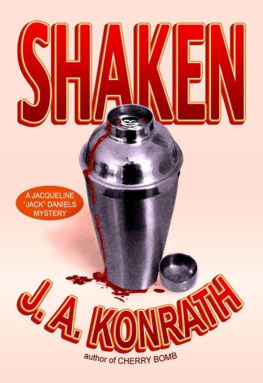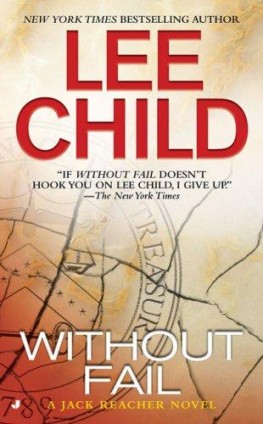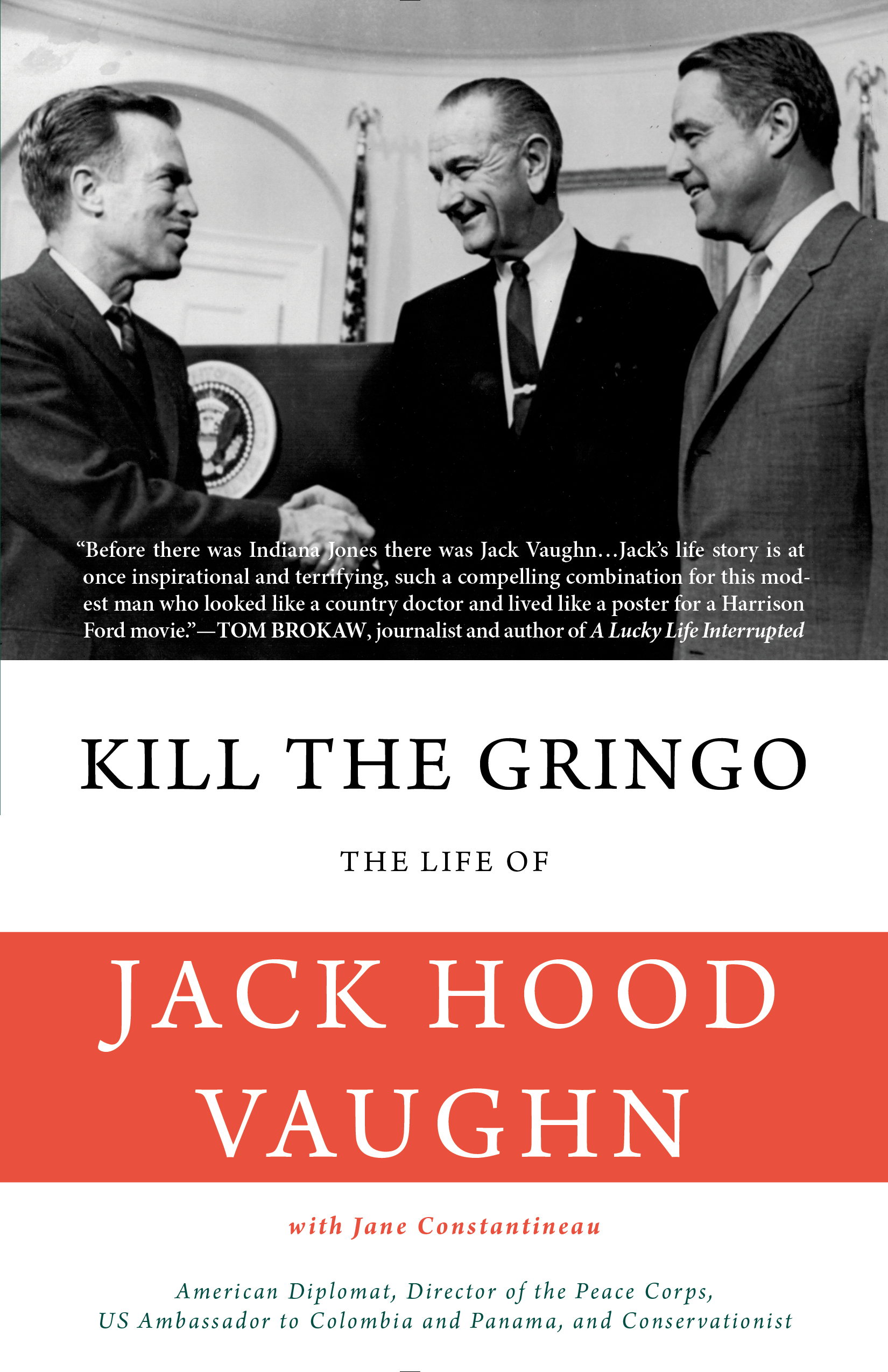Praise for Kill the Gringo
Before there was Indiana Jones there was Jack Hood Vaughn, the fearless Peace Corps executive plunging into some of the most dangerous territory on earth to spread the story of American values.
Jacks life story is at once inspirational and terrifying, such a compelling combination for this modest man who looked like a country doctor and lived like a poster for a Harrison Ford movie.
Tom Brokaw , journalist and
author of A Lucky Life Interrupted
engaging eyewitness historyand a textbook for those seeking a career in public service. You must admire a man whose career advice included, I often say its a gift to be fired at least once, and it is always better to be rumored to work for the CIA than to actually be employed there.
Kirkus Reviews
This is a Genuine Vireo Book
A Vireo Book | Rare Bird Books
453 South Spring Street, Suite 302
Los Angeles, CA 90013
rarebirdbooks.com
Copyright 2017 by Jane Constantineau
All rights reserved, including the right to reproduce this book or portions thereof in any form whatsoever, including but not limited to print, audio, and electronic.
For more information, address:
A Vireo Book | Rare Bird Books Subsidiary Rights Department,
453 South Spring Street, Suite 302,
Los Angeles, CA 90013.
Set in Minion
epub isbn: 9781945572388
Photographs are courtesy of the Vaughn family collection unless otherwise noted.
Photograph of Vance Rogers on page 110 courtesy of Sue Higbee
Photograph of Bob Avery on page 112 courtesy of Sue Higbee
Photograph of Warren Wiggins on page 121 courtesy of Richard Irish
Photograph of Spencer Beebe on page 350 & 376 courtesy of Ecotrust
Design by starling
Publishers Cataloging-in-Publication data
Names: Vaughn, Jack Hood, author | Constantineau, Jane, author.
Title: Kill the gringo : the life of Jack Hood Vaughn / [Jack Hood Vaughn] ; with Jane Constantineau
Description: First Trade Paperback Original Edition | A Vireo Book | New York, NY; Los Angeles, CA: Rare Bird Books, 2017.
Identifiers: ISBN 9781945572173
Subjects: LCSH Vaugh, Jack Hood. | DiplomatsUnited StatesBiography. | United StatesForeign relations1963-1969. | United StatesPolitics and government1963-1969. | PanamaPolitics and government. | Dominican RepublicPolitics and government. | Peace Corps (U.S.)Biography. | IranPolitics and government. | Planned Parenthood. | Conservation International. | Ecotrust. | BISAC BIOGRAPHY & AUTOBIOGRAPHY / General
Classification: LCC E748 .V33 C66 2017 | DDC 327.2/092dc23.
Contents
19661969
Easily the most important single item the international traveler can pack in his luggage is dental floss. Its light and strong and can be used in dozens of waysfor shoelaces and clotheslines and fishing line and all-purpose string. Its also good for cleaning between your teeth, and for subduing antiestablishment staff members.
Guest article in the Saturday Review , circa 1969
I b ecame the second director of the Peace Corps to the rumble of thunder across Southeast Asia and the roar of antiwar protests across American college campuses. More than 385,300 US troops were deployed in Vietnam when I inherited roughly 12,000 American volunteers working for peace in forty-six countries. As I moved into Peace Corps headquarters in 1966 to begin what was then one of the highest-profile jobs in the State Department, young Americans were raising their profile as the leading antagonists of our foreign policy.
That year, the Peace Corps had more volunteers than any time in its history. The University of Wisconsin, Madison was second only to the University of California, Berkeley as a source of volunteer recruits. I made Madison one of my first stops after I was sworn in as director. Addressing students on the steps of the Memorial Union, I congratulated them for their robust response to the call for peace. Hecklers in the crowd repeatedly interrupted me, criticizing my record in Latin America, denouncing the governments role in Vietnam, and accusing the Peace Corps of terminating volunteers who protested the war.
I returned to Madison on a recruiting trip in early November 1968. Some professors let Peace Corps staff take over their history and political science classes to talk about what it meant to be a volunteerat once a thrilling, joyous, maddening, and disease-ridden adventure. This time in Madison, we encountered an even more cynical tone that bordered on hostile among student activists. To these young people, the Peace Corps was a government program under the aegis of a State Department that was murdering civilians and napalming children in Vietnam.
How dare you talk about peace when youre killing people in large numbers every day, they charged. We cant work for the US government, take money from the US government, or represent the US government while America is at war with Vietnam. It had been an especially tumultuous year; in addition to the war, the assassinations of Martin Luther King Jr. in April and Senator Bobby Kennedy in June contributed to the sense that the country had lost its way.
Capping off the week of recruitment events was our usual all-campus assembly, where I was to deliver a talk geared to inspire and entice students (and some professors) to peaceful service abroad. These speeches were normally well attended, as was the case in Madison that day when I arrived at the auditorium with four of my staff.
We entered the building to find most seats already taken, the audience on its feet, and the noise thunderous. Students holding placards and standing along either side of the center aisle quickly closed in on us, shouting and pumping their anti-Peace Corps signs in the air. A couple of signs called me the Hood of the Peace Corps, playing on my middle name and referencing my controversial year as assistant secretary of state.
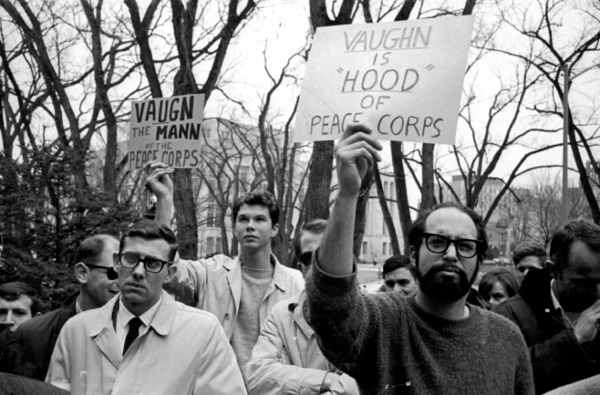
Protesters at the University of Wisconsin, Madison
With hundreds of people in the auditorium looking on and shouting, the students squeezed and jostled us down the aisle as we struggled to keep our footing, unable to communicate with each other over the din. Instead of ascending the stairs to the podium, our aggressors pushed us to stage left and out the side exit to raucous jeering and applause.
Once we were outside, the students grabbed and shoved, knocking down two members of my staff. A former football player recruiter and I began to throw some elbows and punches to get free of this mob. We finally broke loose but were blocked from reentering the auditorium. I was relieved that no press had documented the melee outside the building: Peace Corps Director fights students at recruitment event.
The experience at Wisconsin prepared me for the scene a few months later at UC Berkeley, where guests were invited to speak for thirty minutes on the mall in the center of campus. I was told that the previous weeks speaker had been a striptease artist named Miss Twin 44s; she had drawn a large crowd and been very well received.

